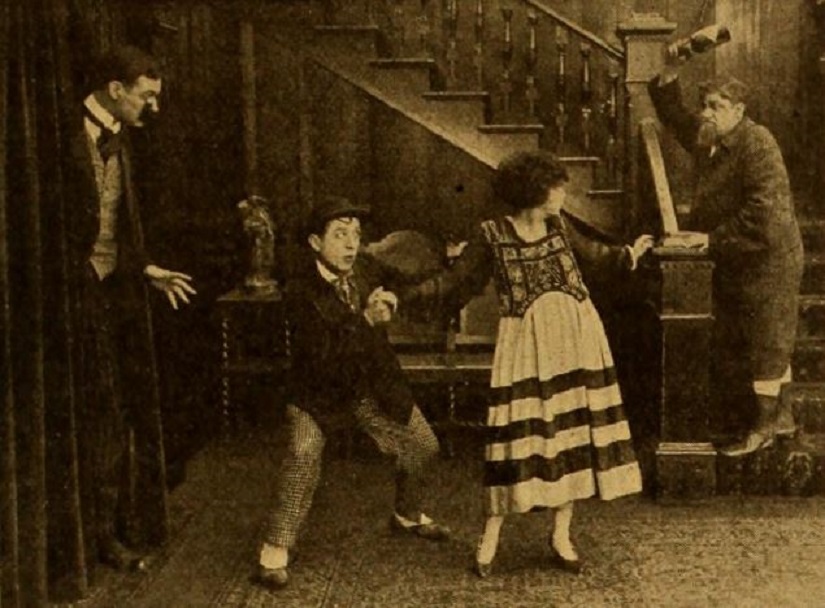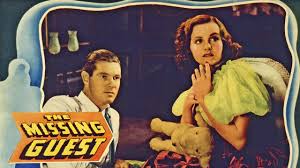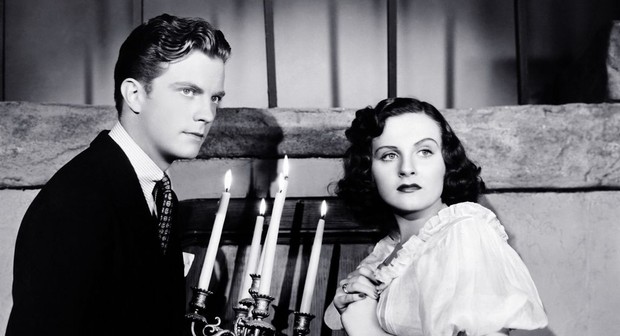🎬 The Missing Guest (1938)

Review of The Missing Guest (1938)
The Missing Guest (1938), directed by John Rawlins, is a delightful blend of mystery and comedy that exemplifies the charm and creativity of 1930s cinema. Adapted from the stage play The Rear Car, the film takes audiences on a thrilling ride filled with intrigue, witty dialogue, and an engaging whodunit plot. While it operates within the conventions of its time, The Missing Guest still manages to entertain with its clever narrative and atmospheric setting.
Plot Summary: A Haunting Mystery
The story unfolds in a grand, secluded mansion rumored to be haunted. A prominent newspaper reporter, Bill (portrayed by Paul Kelly), is assigned to cover the mysterious death of a wealthy magnate. What begins as a routine investigation quickly spirals into a labyrinth of secrets, deception, and supernatural occurrences.
As Bill delves deeper into the case, he finds himself surrounded by a colorful cast of characters, including the magnate’s eccentric relatives, a suspicious butler, and an enigmatic “missing guest” whose presence (or absence) lies at the heart of the mystery. The film weaves a tale of suspense as Bill navigates ghostly sightings, unexpected twists, and an unraveling conspiracy that keeps the audience guessing until the final reveal.
Themes and Atmosphere
At its core, The Missing Guest is a classic exploration of the intersection between rationality and superstition. The film plays with the idea of the supernatural while grounding its narrative in a logical resolution, a hallmark of many mystery stories of the era. Themes of greed, family loyalty, and the pursuit of truth underpin the plot, giving the story both depth and a sense of timelessness.
The atmospheric setting of the mansion is a character in itself, with its dimly lit hallways, secret passageways, and eerie ambiance creating the perfect backdrop for a mystery. The use of lighting and shadows enhances the film’s suspense, drawing viewers into its world of intrigue and uncertainty.
Performances and Character Dynamics
Paul Kelly delivers a charismatic performance as Bill, the quick-witted and resourceful reporter who serves as the audience’s guide through the labyrinthine plot. His portrayal strikes a balance between skepticism and curiosity, making him a relatable and engaging protagonist.
Constance Moore shines as the female lead, bringing charm and intelligence to her role. Her chemistry with Kelly adds a layer of humor and romantic tension that lightens the film’s darker moments. The supporting cast, including familiar character actors of the time, brings depth and personality to the ensemble, with each performance contributing to the story’s intrigue.
The “missing guest” is a particularly intriguing element of the story, functioning as both a plot device and a symbol of the unknown. The interactions between the characters and their speculations about this mysterious figure add layers of complexity to the narrative.
Direction and Cinematography
John Rawlins’ direction is crisp and efficient, keeping the film’s pacing tight while allowing room for moments of suspense and levity. The storytelling is straightforward yet engaging, with clever twists that keep the audience invested.
The cinematography, though limited by the technological constraints of the time, is effective in creating a sense of foreboding. The use of chiaroscuro lighting and carefully framed shots enhances the film’s atmosphere, immersing viewers in its world of mystery and deception.
Humor and Suspense
One of the film’s standout qualities is its ability to balance humor with suspense. The witty banter between characters, particularly Bill and his colleagues, provides moments of levity that contrast with the tension of the mystery. This balance makes the film accessible and entertaining for a wide audience, demonstrating the enduring appeal of mixing genres.
The comedic elements are never at odds with the suspense; instead, they serve to highlight the absurdity of certain situations, adding a layer of charm to the narrative. This blend of tones is a testament to the film’s strong writing and performances.
Critiques and Limitations
While The Missing Guest excels in many areas, it is not without its flaws. Some aspects of the plot rely on coincidences or convenient resolutions, which may feel contrived to modern audiences. Additionally, the film’s relatively short runtime limits the development of certain characters and subplots, leaving some elements underexplored.
The special effects, while effective for their time, may appear dated to contemporary viewers. However, these limitations are part of the film’s charm, reflecting the ingenuity and resourcefulness of 1930s filmmakers.
Legacy and Impact
The Missing Guest stands as a testament to the enduring appeal of mystery stories. Its blend of humor, suspense, and clever plotting makes it a fine example of mid-20th-century genre filmmaking. While it may not have achieved the fame of some of its contemporaries, the film remains a hidden gem for fans of classic cinema and mystery enthusiasts.
The film’s stage play origins are evident in its structure and dialogue, lending it a theatrical quality that adds to its charm. Its success lies in its ability to transport audiences to a world of intrigue and suspense, proving that great storytelling transcends the limitations of time and technology.
Conclusion
The Missing Guest (1938) is a delightful and engaging mystery that showcases the best of classic cinema’s ability to entertain and intrigue. With its charismatic performances, atmospheric setting, and clever narrative, the film offers a captivating experience that holds up remarkably well for modern audiences. Whether you’re a fan of mysteries, classic films, or simply enjoy a good story, The Missing Guest is a must-watch that continues to charm and entertain over eight decades after its release.